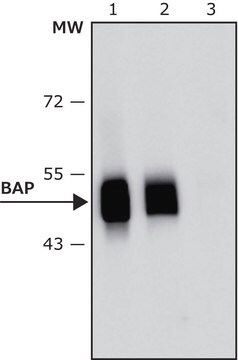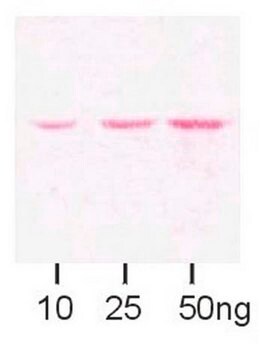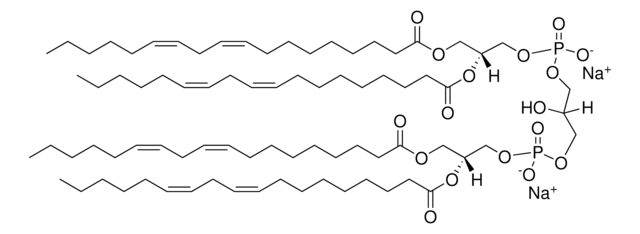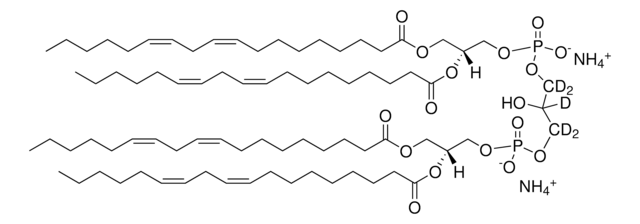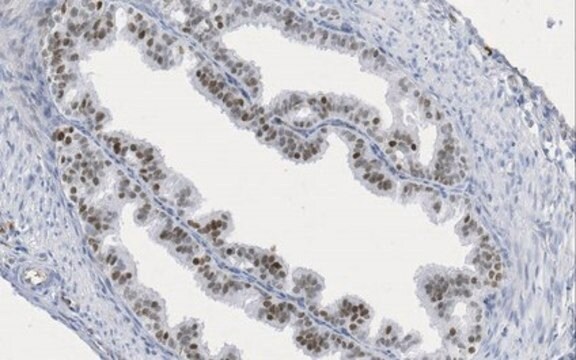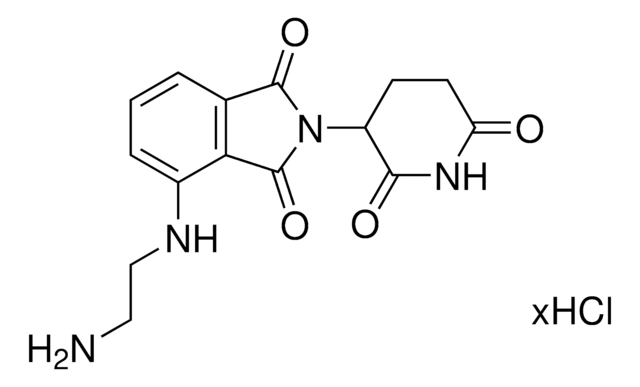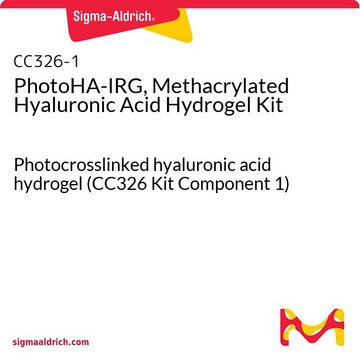ABS1644
Anti-DsbA-L
from rabbit
Sinonimo/i:
Glutathione S-transferase kappa 1, EC:2.5.1.18, GST 13-13, GST class-kappa, GSTK1-1, mGSTK1, Glutathione S-transferase subunit 13
About This Item
IP
WB
immunoprecipitation (IP): suitable
western blot: suitable
Prodotti consigliati
Origine biologica
rabbit
Forma dell’anticorpo
unpurified
Tipo di anticorpo
primary antibodies
Clone
polyclonal
Reattività contro le specie
mouse, human
Confezionamento
antibody small pack of 25 μL
tecniche
immunocytochemistry: suitable
immunoprecipitation (IP): suitable
western blot: suitable
Isotipo
IgG
N° accesso NCBI
N° accesso UniProt
Condizioni di spedizione
ambient
modifica post-traduzionali bersaglio
unmodified
Informazioni sul gene
mouse ... Gstk1(76263)
Descrizione generale
Specificità
Immunogeno
Applicazioni
Western Blotting Analysis: A representative lot detected DsbA-L in mouse brain, mouse kidney, and mouse liver (Liu, M., et. al. (2008). Proc Natl Acad Sci USA. 105(47):18302-7; Lui, M., et. al. (2015). J Biol Chem. 290(16):10143-8).
Immunoprecipitation Analysis: A representative lot detected DsbA-L in 3T3-L1 adipocytes (Liu, M., et. al. (2008). Proc Natl Acad Sci USA. 105(47):18302-7; Lui, M., et. al. (2015). J Biol Chem. 290(16):10143-8).
Immunocytochemistry Analysis: A representative lot detected DsbA-L in adipocytes on differentiation day 7 were used for the following studies. confocal immunofluorescence study of DsbA-L co-localization with the mitochondrial marker (MitoTracker) and the ER marker (PDI) in 3T3-L1 adipocytes (Lui, M., et. al. (2015). J Biol Chem. 290(16):10143-8).
Signaling
Qualità
Western Blotting Analysis: A 1:1,000 dilution of this antibody detected DsbA-L in 10 µg of mouse kidney tissue lysate.
Descrizione del bersaglio
Stato fisico
Stoccaggio e stabilità
Altre note
Esclusione di responsabilità
Non trovi il prodotto giusto?
Prova il nostro Motore di ricerca dei prodotti.
Classe di pericolosità dell'acqua (WGK)
WGK 1
Certificati d'analisi (COA)
Cerca il Certificati d'analisi (COA) digitando il numero di lotto/batch corrispondente. I numeri di lotto o di batch sono stampati sull'etichetta dei prodotti dopo la parola ‘Lotto’ o ‘Batch’.
Possiedi già questo prodotto?
I documenti relativi ai prodotti acquistati recentemente sono disponibili nell’Archivio dei documenti.
Il team dei nostri ricercatori vanta grande esperienza in tutte le aree della ricerca quali Life Science, scienza dei materiali, sintesi chimica, cromatografia, discipline analitiche, ecc..
Contatta l'Assistenza Tecnica.